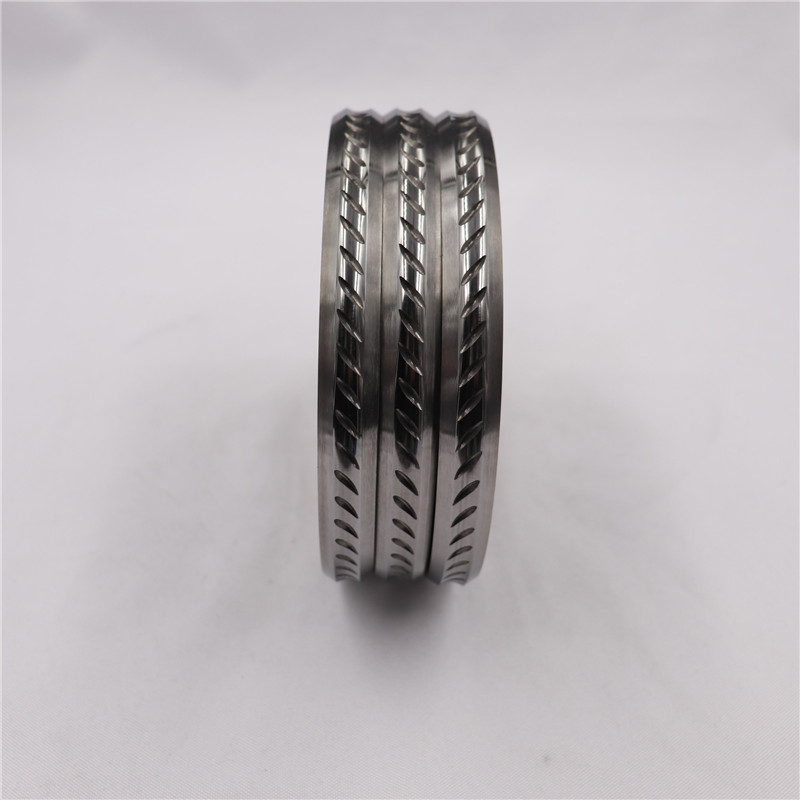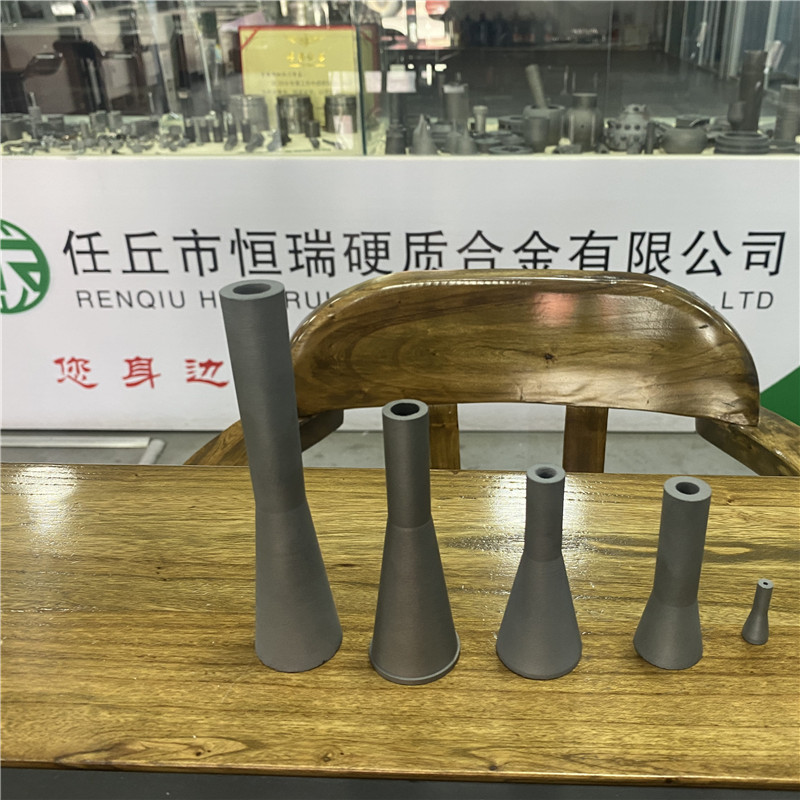We use cookies to enhance your experience. By continuing to browse this site you agree to our use of cookies. More info.
International Syalons (Newcastle) Ltd., have been exploring the mechanical properties of silicon nitride-based sialon advanced ceramics at great length since the material’s inception in the early-1980s. Sialon (Si-Al-O-N) is an advanced engineering ceramic that offers outstanding fracture toughness, high strength, and excellent resistance to multiple wearing phenomena, in addition to high temperature and corrosion resistance. This enables silicon nitride-based ceramics to withstand severe operating conditions that may cause alternative ceramics to propagate flaws, deform, or fail. Hardness and the resulting wear resistance are therefore vital properties which are generally offered by advanced ceramics. Blasting Nozzle

The hardness of a material is a measure of how well its crystalline structure holds together in response to friction or impact forces. Hardness usually exhibits a linear relationship to the strength of the atomic structure of the material. However, it is a complex property that is dependent on numerous factors including strength, toughness, and ductility.
Three distinct measurement types are ascribed to determine the hardness of materials in response to specific forms of stress. In engineering sectors, the most prevalent form of testing is for indentation hardness. This refers to a material’s ability to resist deformation by an indenter such as a sharp point. Indentation hardness can be further broken down into multiple scales determined by different testing methodologies.
Extreme hardness values enable ceramics to withstand significant wearing phenomena from mechanical agitation to small-particle abrasion. This enables sialon ceramics to be engineered into complex shapes for applications in some of the most demanding industrial sectors. Nozzles, plates, dies, milling media, welding jigs, and fixtures are all routinely manufactured using sialon ceramics.
To ensure optimal bonding between a coating medium and the surface substrate, for example prior to the bronze (CuSn) coating of a cast aluminium (Al) gearbox casing, shot blasting is carried out to modify the surface topography of the base metal. The problems of shot blasting are well-documented, however. Gradual wear of shot blast nozzles represents an ongoing and expensive maintenance concern, particularly when using highly abrasive particles like aluminium oxide (Al2O3). These extremely fine and hard-wearing microparticles can abrade the nozzle of the shot blaster, causing eventual component failure.
Tungsten carbide (WC) is a well-established material for shot blast nozzles, but International Syalons has demonstrated the superiority of Syalon 050 for such high intensity wear applications.
Tungsten carbide offers high toughness and hardness due to its microstructural arrangement of high strength carbide grains. However, these grains are cemented together by pliable cobalt particles which are susceptible to fine particle abrasion. Under test conditions, shot blast nozzles manufactured from tungsten carbide lasted just 20-25 hours before a replacement was required.
Syalon 050 is an α/β-sialon silicon nitride-based ceramic composite that is sintered to produce dense, interlocking needle-like grains and a fine equiaxed granular structure. This structural matrix is responsible for the material’s hardness rating of 94 HRA, creating a 0% porosity bulk material which is inherently resistant to an array of abrasive and corrosive industrial environments and refractory temperatures. Syalon 050 can maintain this mechanical stability at continuous operating temperatures of up to 1400°C (2552°F), exhibiting total non-reactivity with molten aluminium, brass, and tin for metallurgical applications.
By comparison, Syalon 050 shot blast nozzles continued to perform after 814 hours under the same operating conditions, after which the Syalon nozzles showed no signs of wear after testing. On this occasion it translated to annual savings of over £6,500 per machine, with a single Syalon 050 nozzle outlasting as many as 40 tungsten carbide nozzles. A follow up study is underway with the aim of reducing the cost of our customer’s overall nozzle consumables by 60—70%.
Extrusion describes the process where a metal such as copper or brass is forced through an extrusion die with a smaller cross-section. This deforms the material, causing a lengthening of its granular structure and forcing it to adopt a new cross-section uniformly across the entire workpiece. It is an extremely common metal forming process used to convert cylindrical billets into hollow tubes, or more complex profiles and sections.
Soft metals that are easily extruded into simple, relatively small profiles can be manufactured through cold extrusion at near room temperatures. However, hot extrusion is generally preferable as it often yields semi-finished parts with improved mechanical properties, and it can be used for more challenging alloys. Hot extrusion involves the heating of raw billets to above the metal’s recrystallization temperature before it is forced through the extrusion die. Exit temperature and speed are subsequently critical parameters in the long-term performance of extrusion dies used in hot working of various alloys.
Tungsten carbide, for example, is widely used for extruding aluminum bars and profiles at a recrystallization temperature of roughly 350 – 500°C (650 – 900°F). While tungsten carbide can readily withstand the thermal conditions of extrusion, it is susceptible to a unique and damaging phenomenon known as die pick-up which refers to a minute accumulation of metallic elements from the extrusion onto the surface of the extrusion die. This can cause surface defects and leading to poor quality extruded products. Establishing a low-wetting alternative to metallic extrusion dies with enhanced thermomechanical performance is important for meeting the high-yield and throughput demands of modern metalworking facilities.
Syalon 101 is a technical-grade ceramic based on silicon nitride (Si3N4), boasting exceptional thermomechanical properties suitable for hot extrusion of metals such as copper, brass and nimonic alloys. It is a β-phase sialon with a maximum use temperature of 1200°C (2192°F), thermal shock resistance of ΔT = 900 °C, and outstanding compressive strength. This enables Syalon 101 extrusion dies to overcome numerous problems traditionally associated with extrusion, such as short die service life and the generation of surface defects due to die pick-up.
For many years, a major European-based extruder of brass wire and bars has relied on Syalon 101 extrusion dies to fabricate near-net shapes of 2 – 10mm diameters. They have optimized their manufacturing performance so that a single Syalon 101 extrusion die can compress as many as 1200 billets with minimal wear and maximum surface quality.
A UK-based manufacturer has also demonstrated the extreme long-service capabilities of Syalon 101 extrusion dies for both brass and copper. The sialon components successfully outperformed conventional materials for brass extrusion by as much as 150%, while copper extrusion using sialon dies yielded an additional 35 tons of end-product material.
Single shot impact extrusion of nimonic alloys with high concentrations of nickel and chromium has also been improved using Syalon 101. An extrusion die fabricated from sialons successfully produced as many as 30,000 components before substantial die wear was observed, compared to 750 components manufactured using a steel extrusion die.
Our Syalon 101 extrusion dies have demonstrated exceptional levels of performance for extrusion and drawing of copper, brass, and nimonic alloys. They have successfully eliminated die pick-up due to the lack of a metallic phase within the die, subsequently extending the component service life and reducing scrap production by improving the component surface finish every single time.
International Syalons is one of the UK’s leading manufacturers of technical ceramics and a thought-leader in the development of sialon materials. Our product range incorporates many solutions to established industry challenges, helping facilities reach new levels of material yield and higher throughput volumes with advanced material solutions. We are dedicated to developing advanced ceramics to help customers achieve novel solutions to ongoing industry challenges.
If you would like any more information about our shot blast nozzles or extrusion dies, or if you have any specific applications about using our advanced engineering experience for your application please do not hesitate to contact us directly.
This information has been sourced, reviewed and adapted from materials provided by Internatrional Syalons.
For more information on this source, please visit International Syalons.
Please use one of the following formats to cite this article in your essay, paper or report:
International Syalons. (2021, December 30). Supreme Wear Properties - Syalon vs Tungsten Carbide. AZoM. Retrieved on December 14, 2022 from https://www.azom.com/article.aspx?ArticleID=17807.
International Syalons. "Supreme Wear Properties - Syalon vs Tungsten Carbide". AZoM. 14 December 2022. <https://www.azom.com/article.aspx?ArticleID=17807>.
International Syalons. "Supreme Wear Properties - Syalon vs Tungsten Carbide". AZoM. https://www.azom.com/article.aspx?ArticleID=17807. (accessed December 14, 2022).
International Syalons. 2021. Supreme Wear Properties - Syalon vs Tungsten Carbide. AZoM, viewed 14 December 2022, https://www.azom.com/article.aspx?ArticleID=17807.
Do you have a question you'd like to ask regarding this article?
In AZoM's latest interview, we talk with Jeff Shainline from the NIST in Boulder, CO, about his research looking at forming superconducting circuits with synaptic behavior. This research could transform how we approach AI and computing.
In this interview, AZoM speaks with Dr. Tanja Butt, Product Manager at Retsch, about mechanochemistry and its applications for creating a sustainable future.
Ryan Lerud & Greg Gargus
In this interview, AZoM speaks with Greg Gargus from Guided Wave, to discuss the advances in hydrogen peroxide sterilant vapor monitoring.
Shimadzu’s EDX-7200 is the leader of the EDX series, providing high speed, sensitivity and precision. The 7200 can also provide support on the newest regulations for consumer and environmental issues.
The Datapaq® Food Tracker® from Fluke Process Instruments is a thermal profiling system for food processing applications.
TESCAN launches its brand-new TENSOR system, a dedicated, near-UHV 4-STEM for multimodal characterization of nanoscale particles.
AZoM.com - An AZoNetwork Site

TC Sand Blasting Nozzle Owned and operated by AZoNetwork, © 2000-2022